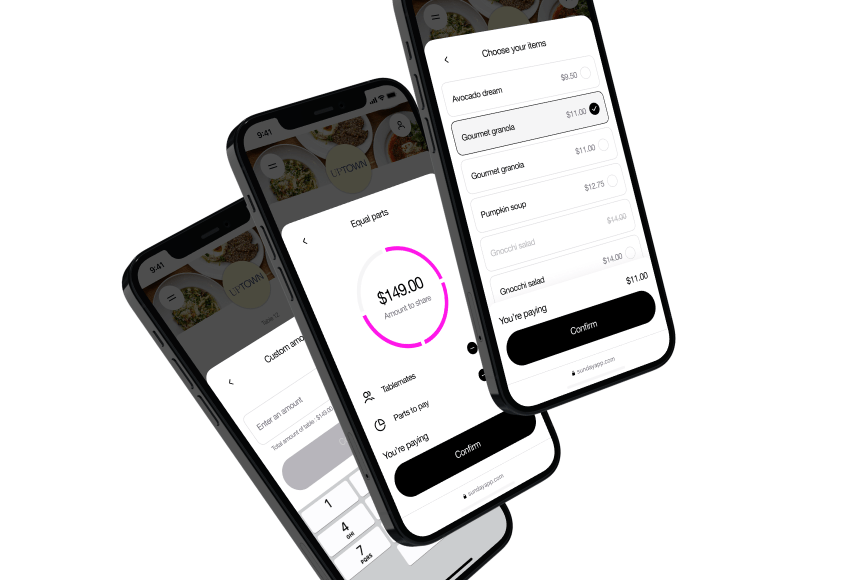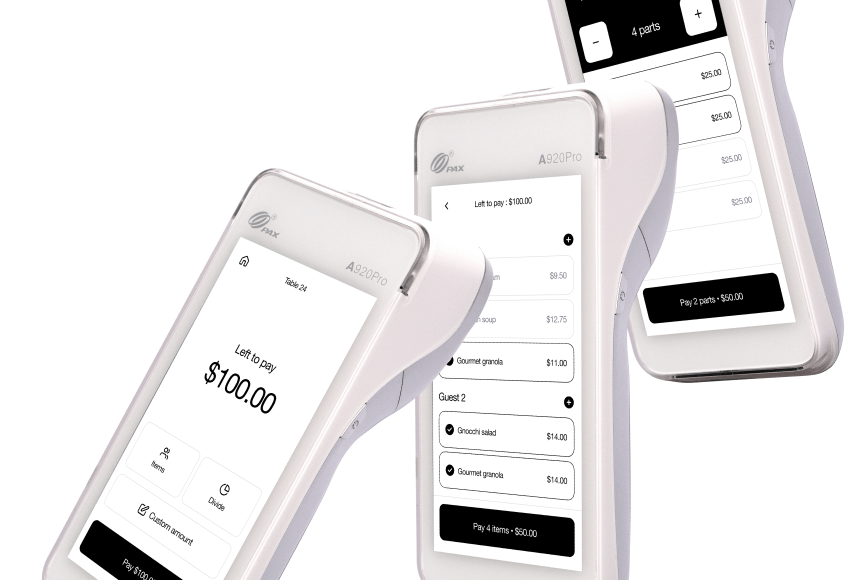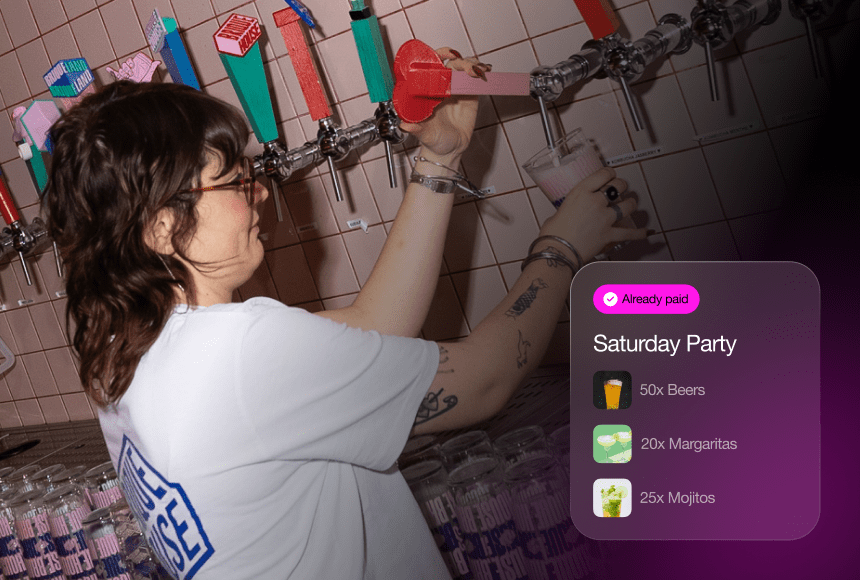
Bringing Speed, Convenience, and Connection to Dining
A Shift Toward Digital Simplicity
Restaurants used to be places where the most innovative tech you’d see was a handheld POS device or a digital sign displaying daily specials. But today, diners expect more than great food and a warm welcome. They want convenience, minimal wait times, and the ability to handle everyday tasks—like paying the bill—straight from their smartphones. That’s where QR code payment enters the picture, promising an experience that feels streamlined and modern without compromising the personal, human touch guests love about eating out.
According to the National Restaurant Association, the shift toward contactless experiences has accelerated rapidly (source). Many guests now look for (and even prefer) digital interactions that make their lives easier. But how does QR code payment specifically shape the overall customer experience? And what does it mean for a restaurant’s bottom line? Let’s explore these questions step by step, digging into the ways a simple scan can make all the difference.
1. Speeding Up the Final Moments of a Meal
One of the most common complaints in a busy restaurant isn’t about the food or service—it’s about the wait for the check. After finishing a great meal, a diner may have places to go or people to see, and a ten-minute delay to get and pay the bill can sour an otherwise fantastic experience. With QR code payment, guests can handle the transaction as soon as they’re ready, scanning a small code at the table with their phone and tapping through a quick checkout process.
This self-service approach significantly shortens the time between finishing dessert and walking out the door. Diners feel empowered because they don’t have to depend on a server to notice they’re done, bring the bill, collect a credit card, and return for a signature. Saving even a few minutes might sound trivial, but for anyone in a rush—or simply eager to continue their evening—those minutes really count.
Customer perspective: “I can pay right on my phone and be on my way. No waiting, no stress. That’s a big plus in my book.”
2. Reducing Friction Points for Guests
Restaurants often have little “friction points” that accumulate into annoyance: waiting for water refills, trying to split the bill, or seeking a pen to sign a credit card slip. QR code payment eliminates one of the biggest friction points by letting customers handle payment on their own device. In some cases, the system even enables splitting the check among multiple diners with a few taps, removing the stress of calculating who owes what.
This fluid checkout can lead to a sense of relief. Diners who have had a lovely meal want the farewell to be equally pleasant—and not overshadowed by confusion about the final tab. A frictionless experience from start to finish is more likely to keep them returning for future meals. It also sets the stage for higher satisfaction, which might translate into a better tip for servers and positive word-of-mouth for the restaurant.
Industry note: Restaurant Dive reports that consumers gravitate to places minimizing wait times and offering user-friendly digital solutions (source). QR code payment is quickly becoming a top method to achieve exactly that.
3. Elevating Perceptions of Tech-Savviness
Even beyond convenience, modern diners often judge an establishment’s relevance by how up-to-date it seems. Introducing a slick QR code payment option conveys that your restaurant is tuned into current trends and invests in solutions that simplify life for customers. This can help you stand out in a crowded market, especially among younger demographics who practically live on their phones.
At the same time, good technology implementation doesn’t have to feel robotic or impersonal. A well-designed QR code solution can integrate your restaurant’s branding, show menu images, and even share behind-the-scenes stories about your offerings. Think of it as adding a digital extension to your staff—one that can handle the mundane tasks while your human team focuses on building relationships and delivering top-notch hospitality.
Owner perspective: “We introduced QR code payment and immediately saw diners posting about it on social media, praising us for making things so easy. We became ‘the cool spot’ for tech-savvy crowds practically overnight.”
4. Facilitating Faster Table Turnovers
From a restaurant’s standpoint, faster table turnover can be crucial—especially during peak hours. When customers can pay swiftly on their phones, they leave sooner, allowing you to seat new parties without delay. That efficiency helps you serve more people, which naturally impacts your daily revenue potential.
But how does this affect the guest experience? More available tables mean less waiting for those arriving. Meanwhile, the folks leaving don’t feel rushed out; they’re leaving on their own terms, simply because they finished the checkout. Everyone wins.
Pro tip: Train servers to mention the QR code payment option a few minutes before diners typically ask for the check. This ensures guests know how to pay if they’re in a hurry, without feeling pressured.
5. Encouraging More Flexible Tipping
Nobody likes that awkward moment of deciding how much to tip while a server stands nearby with a payment terminal. QR code payments give diners privacy in tipping, often including suggested percentages (like 15%, 18%, or 20%) or a custom amount. This small tweak can actually raise average tip amounts, because diners see a straightforward, recommended range and often pick one of the higher presets.
For the guest, that sense of ease can feel like a courtesy. They’re not fumbling for change or worried about shorting a server. For your staff, it might translate into bigger tips, which in turn fosters better morale and service. The entire ecosystem benefits from a thoughtful approach to tipping, made simpler by a neat digital interface.
Server perspective: “When diners pay via QR code, I’ve noticed more consistent and slightly higher tips. It’s a win-win: they find it hassle-free, and I feel appreciated.”
6. Reducing Wait-Related Anxiety
It’s common for diners to grow antsy while trying to attract a server’s attention when they want the bill. That wait can feel longer if the restaurant is busy or if staff are juggling multiple tables at once. QR code payment takes that uncertainty away. The second a guest decides they’re finished—maybe their kid is getting restless, or they need to catch a show—they can finalize payment on their phone. No eye contact or hand-waving required.
This sense of control improves the emotional aspect of dining out. Without the final “taxi-lamp moment” of waiting around, the entire outing retains a note of positivity. Guests depart feeling like your restaurant actively respects their time and accommodates their needs.
Anecdote: One restaurant manager recalls a mother with two energetic toddlers who was grateful she could pay the instant she noticed her kids getting antsy. The result? Fewer tears, less stress, and a big smile at the door.
7. Encouraging Feedback and Reviews
A well-implemented QR code system can do more than process payments; it can also gently prompt diners for feedback. Right after they pay, many solutions show a quick pop-up: “Rate your experience!” or “Tap here to leave a Google review!” The timing is perfect—diners are still at their table, presumably satisfied, and the memory of their meal is fresh. Capturing that positive sentiment can be far easier than asking them to review you later, once they’ve gone home and distractions set in.
When it comes to building an online reputation, timely reviews matter. A handful of five-star posts can significantly boost your visibility on local search results. Plus, if your system also includes a direct line for private feedback, you can address small complaints or misunderstandings before they escalate into negative public reviews. This approach not only cements a good relationship with your customers but also polishes your digital presence.
Data insight: Restaurant Business Online notes that real-time feedback loops often boost overall ratings, as satisfied diners act in the moment rather than forgetting or losing momentum (source).
8. Reinforcing Your Brand Identity
Believe it or not, a QR code payment system can add to your brand’s story. By customizing the interface—maybe with your color scheme, your logo, or a playful tone in the instructions—you extend the ambiance you’ve worked so hard to cultivate. Imagine a cheeky message that pops up after payment like, “We appreciate you! Come back soon for more mouthwatering surprises!” This level of personalization helps you remain memorable.
You might even tie special promotions into the final screen. For example, after paying, diners could see a coupon code for next time, or a note about an upcoming wine-tasting event. In this way, you transform a routine payment into a brand touchpoint that fosters loyalty and excitement.
Branding tip: Keep the language and visuals consistent with your restaurant’s style. If you’re a high-end steakhouse, you might use an elegant color palette and polished copy. If you’re a laid-back taco joint, inject a bit of humor or bright graphics.
9. Integrating Loyalty and Customer Data
QR code payment can also seamlessly connect to loyalty programs. Diners who scan to pay could automatically accrue points or see their existing balance. This setup keeps them engaged, encouraging return visits since they’re reminded of potential freebies or tier-based perks. Meanwhile, your business gains more robust data on who’s visiting and how often, letting you tailor offers that fit their preferences.
Imagine a scenario: a regular named Sarah typically visits on Tuesdays and always orders a margarita. Your system picks this up, so next time she pays via QR code, she might see a note, “Hello again, Sarah! Enjoy a free guac with your margarita today.” That personal touch can skyrocket loyalty and word-of-mouth referrals—people love to talk about experiences that feel tailored just for them.
10. Linking to Online Ordering and Reservations
As you build a digital ecosystem, QR code payment can become one piece in a puzzle that includes online ordering, reservations, and even event bookings. Perhaps a customer who’s just paid sees a button that says, “Liked tonight’s dinner? Reserve your table now for Valentine’s Day!” or “Order for takeout next time you’re in a hurry.” By creating these connections, you keep your restaurant top-of-mind for future dining needs.
Customers appreciate the convenience of a single platform that addresses multiple aspects of their dining journey. And your restaurant wins by capturing more direct reservations—bypassing third-party sites that might cut into your margins.
Real-World Example: The Busy Brunch Spot
Picture a trendy brunch café in a bustling urban area. They seat dozens of guests each hour on weekends, with lines wrapping around the block. Before adopting QR code payment, the café’s biggest pain point was the checkout. Servers scrambled to deliver checks, process credit cards, and handle awkward splitting of bills among friend groups. Some diners left satisfied, but others found the final step too clunky.
After introducing table-specific QR codes, a few immediate changes took hold:
- Happier crowds: The line moved quicker because diners wrapped up their payments without waiting for staff to finalize transactions.
- Higher tips: The preset tip suggestions in the app gently nudged customers to tip 20% or more.
- More personalized service: Freed from the chore of running cards back and forth, servers spent that time chatting with tables, offering custom recommendations, and generally boosting the café’s reputation for friendliness.
Reviews went up, tips went up, and staff morale improved—simply by removing friction from the payment process and letting technology handle the behind-the-scenes details.
Seeing the Bigger Picture
Ultimately, QR code payment isn’t just about finishing a meal more quickly. It’s about shaping the entire dining experience so that it feels cohesive, convenient, and delightfully modern. Guests who don’t have to wait for checks are more relaxed, staff with fewer repetitive tasks are more attentive, and business owners with integrated data can make smarter decisions.
As the restaurant industry continues to evolve—embracing digital menus, loyalty apps, and real-time feedback channels—the role of QR code payment is poised to grow. It’s an easy entry point into higher levels of restaurant tech, often yielding immediate results in customer satisfaction and operational efficiency.
Yes, the best food, ambiance, and service will always be the heart of what you do. But when your checkout process is just as flawless, you turn a good meal into a memorable one. With QR code payment, you can offer an end-to-end experience that satisfies your diners’ modern appetites for speed and convenience while respecting the warmth and human touch that truly defines hospitality. And that, in the era of savvy, on-the-go customers, is a recipe for repeat visits and long-term success.
Find out more today
Drop us your details below and we’ll reach out within the next 24h
“Check please” is a thing of the past.
With our integrated QR codes your customers pay in seconds, straight from their table.



